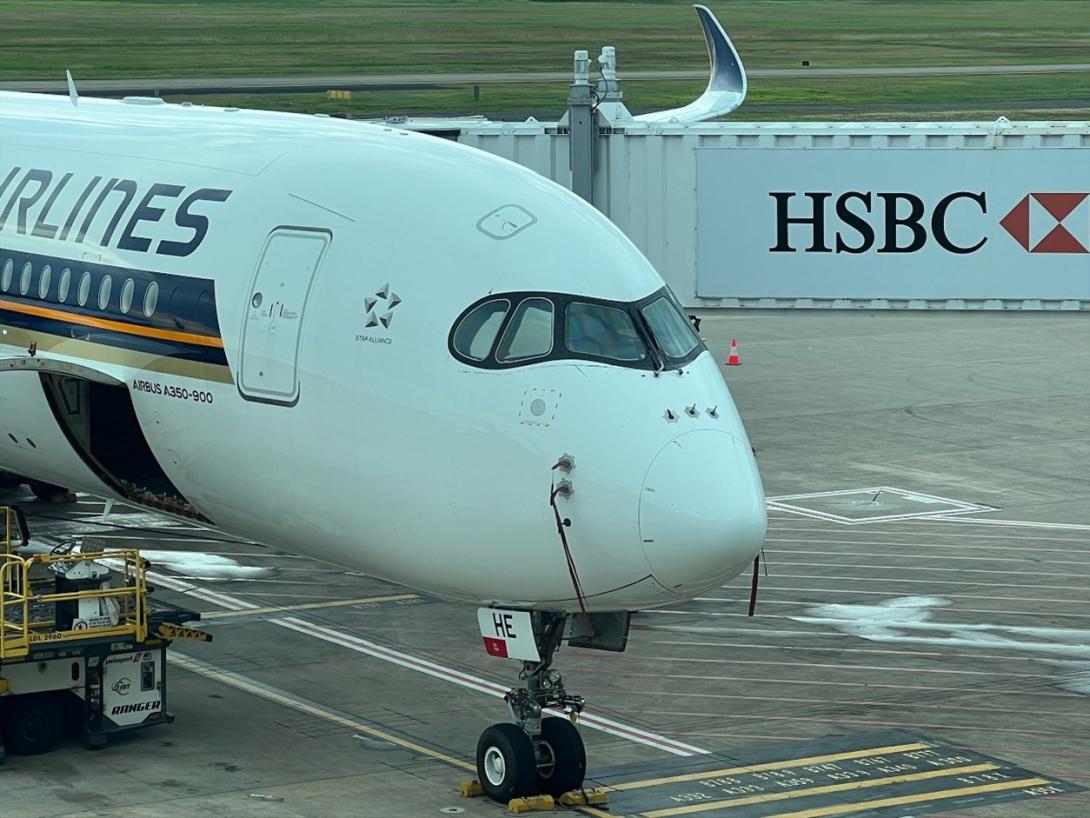
A Singapore Airlines Airbus A350 was about to be pushed back from the gate at Brisbane’s international terminal on 27 May 2022 when a refueller in an adjacent bay noticed covers were still on the aircraft’s pitot probes, an ATSB investigation final report describes.
Upon being alerted to this, the licenced aircraft maintenance engineer (LAME) responsible for the aircraft’s turnaround returned to the aircraft and removed the pitot covers. The aircraft then proceeded for its planned passenger service to Changi, Singapore, without further incident.
Pitot probes, which provide airspeed data to aircraft systems and flight crew, are routinely covered during turnarounds at Brisbane due to the nesting behaviour of a species of invasive mud wasp, which has been known to block the tubes in as little as 20 minutes. The covers must be removed prior to take-off.
In a serious incident in 2018, a Malaysia Airlines A330 took off from Brisbane with its pitot covers still in place, and its crew had to conduct an emergency return landing without airspeed data.
In this more recent occurrence, the ATSB found Singapore Airlines’ contracted engineering provider at Brisbane, Heston MRO, had not yet implemented an acceptable method for accounting for tooling and equipment prior to aircraft pushback, although that was identified in the ATSB’s investigation into the 2018 occurrence.
“Additionally, the procedural risk controls which were in place for the removal of the pitot probe covers were circumvented when the LAME certified for their removal in the technical log and removed a relevant warning placard from the flight deck, without visually or verbally confirming that they had been removed,” ATSB Chief Commissioner Angus Mitchell said.
“The final walk around inspection of the aircraft was also not conducted by the LAME or the headset operator. That inspection is intended to ensure that the aircraft is correctly configured for flight with all panels and doors closed and all covers removed.
“This incident demonstrates how assumptions and procedural omissions can lead to unsafe conditions; in this case, the potential for an aircraft to take-off with erroneous or absent airspeed indications.”
While the ATSB was not able to formally establish that fatigue contributed to the occurrence, the investigation did note the LAME had reported the workload associated with their dual role of LAME/regional manager had become considerably more demanding following the COVID-19 pandemic.
“The engineering provider did not track the work-related hours of personnel with dual roles like the LAME involved in this incident (who was also the regional manager) for fatigue calculation purposes,” Mr Mitchell said.
“This meant there was an increased risk of a fatigue-related incident with these personnel.”
The report notes that, since the occurrence, Heston MRO no longer requires the Brisbane regional manager position to undertake dual responsibilities, and tracks work hours of all employees for fatigue management purposes.
Also, during the ATSB’s investigation, a review of CCTV footage of pre-flight inspections by Singapore Airlines flight crew for the occurrence flight and others around the same time showed they were truncated, and not undertaken in accordance with company procedures.
“The pre-flight walk-around occurs before the pitot probe covers are to be removed, so this did not contribute to this incident,” Mr Mitchell noted.
“Nonetheless, it was identified in our investigation as a safety issue, which Singapore Airlines has subsequently addressed.”
The airline, the report notes, has communicated with flight crews about the importance of pre-flight walk-around checks to be completed in their entirety and in accordance with the procedures.
The airline has also provided Heston MRO with pitot probe covers with longer streamers, to improve conspicuity.


